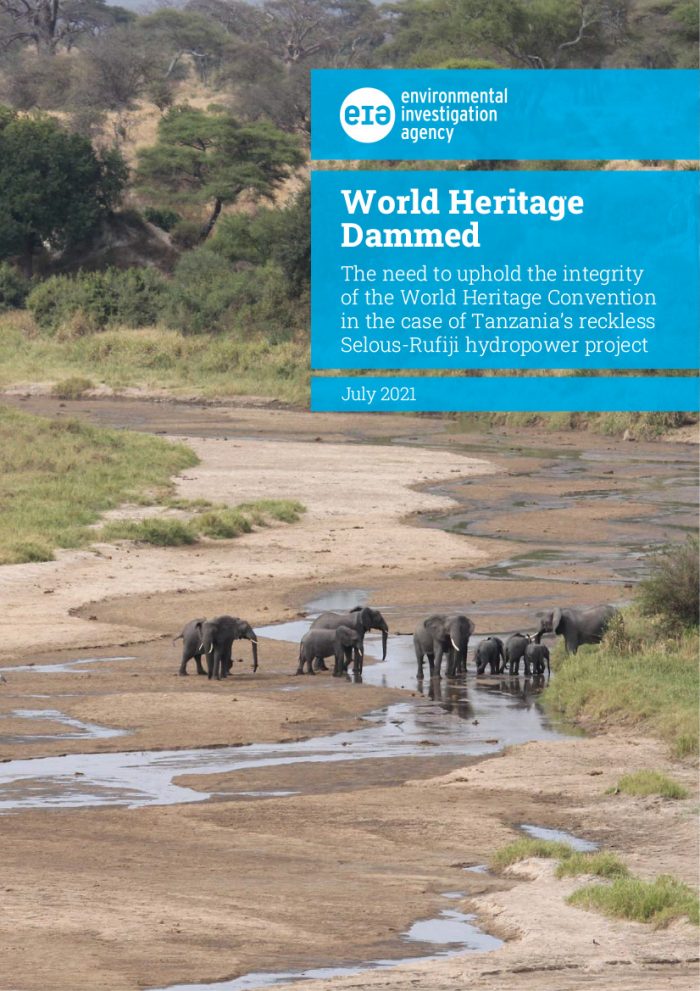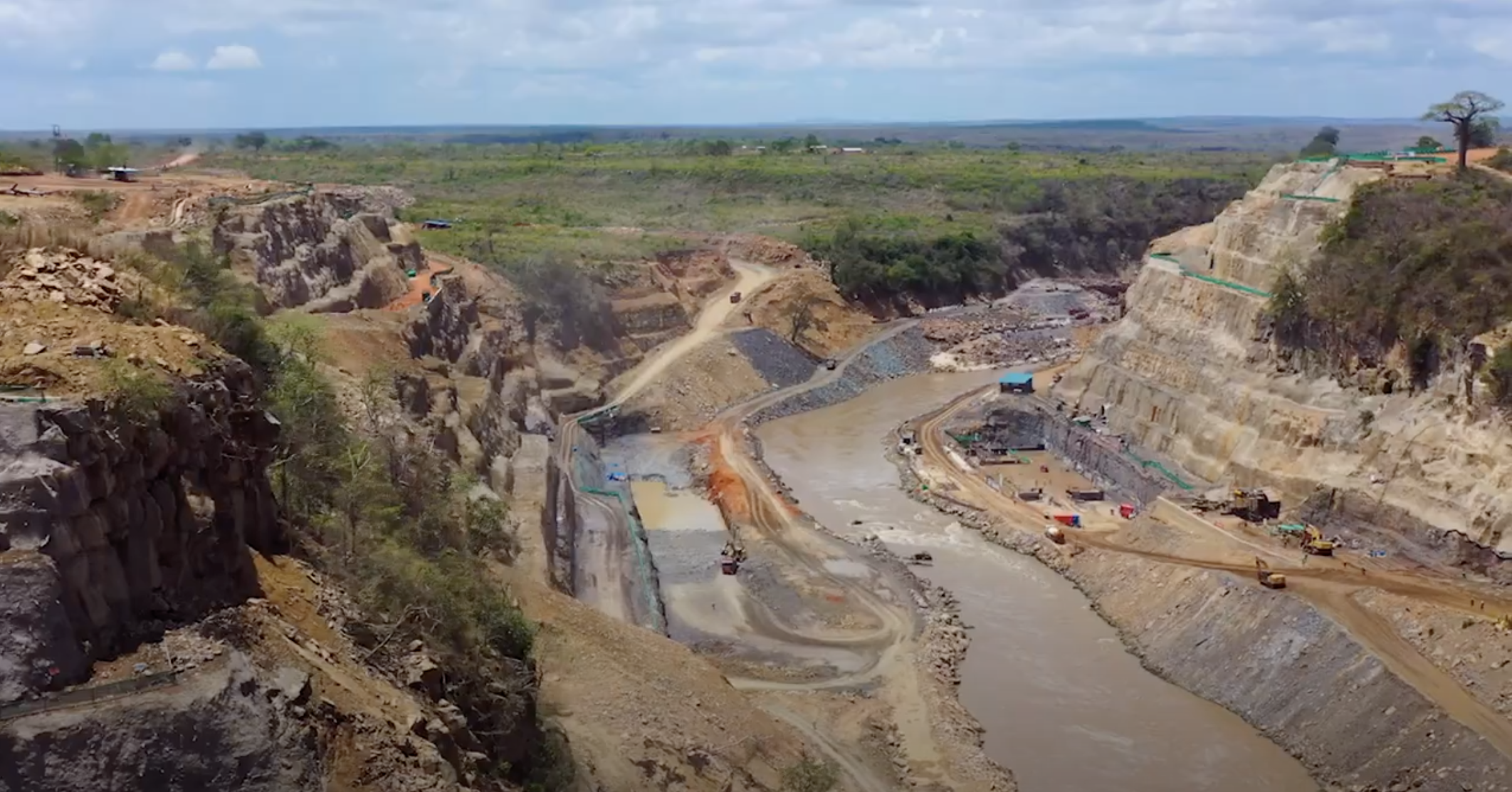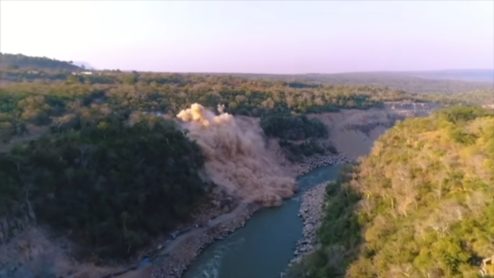It’s time to strip Tanzania’s renowned Selous Game Reserve of World Heritage status
As the World Heritage Committee prepares to convene from Friday, EIA calls for it to strip the internationally famous Selous Game Reserve in Tanzania of its status as a World Heritage Site due to the irreversible damage done by construction of a controversial dam.
Our new briefing World Heritage Dammed lays bare the damage already done to the Selous by work on the dam and makes the case for delisting it as an essential step in preserving the integrity of World Heritage sites around the globe.
 The Rufiji hydropower project will flood an area of 125,000 ha and construction has already resulted in a sprawling industrial complex in the heart of the Selous’ rich wilderness, with a network of new roads connecting poachers to a now exceptionally vulnerable ecosystem.
The Rufiji hydropower project will flood an area of 125,000 ha and construction has already resulted in a sprawling industrial complex in the heart of the Selous’ rich wilderness, with a network of new roads connecting poachers to a now exceptionally vulnerable ecosystem.
Shruti Suresh, EIA Deputy Wildlife Campaign Leader, said: “It may appear incongruous that a campaigning environmental group such as EIA is urging that the protection of World Heritage status be removed from such a unique area, but it’s vital that a line in the sand is drawn on this issue.
“The reasons for designating the site as World Heritage are effectively gone, thanks to the Rufiji hydropower project, which contravenes international legal frameworks and will only continue to further undermine one of Africa’s largest remaining wilderness areas.
“Multiple requests for the project to be halted have been ignored by the Tanzanian Government; instead, it has accelerated construction of the dam, introducing security patrols at the site and threatening any opposition with jail time.
“It’s appalling that this has happened on the Tanzania Government’s watch and at its direct instigation – the World Heritage Committee needs to send a clear and unambiguous message to the world that the willful destruction of such a special environment is totally unacceptable.”
EIA has campaigned against the Rufiji hydropower project and has called on governments around the world to support the delisting of the Selous, as well as urging all companies involved to divest from the project.

Elephants in the Selous – how it should be …
The UN Educational, Scientific and Cultural Organisation (UNESCO) World Heritage Centre and the International Union for Conservation of Nature (IUCN) have recommended that the World Heritage Committee remove its status when it meets.
But although EIA welcomes the recommendation to the Committee, we are concerned that the final decision may well be made on political rather than environmental grounds – two of the Committee members, China (also the Chair) and Egypt, have a conflict of interest, given that both countries have considerable commercial interests in the dam.
Since 2014, the Selous has occupied the precarious position of World Heritage in Danger due to intense poaching at the time and, subsequently, deforestation linked to the dam’s construction.
The project has unfortunately reached a point of no-return, having already caused irreversible damage, especially with the diversion of the Rufiji river from its natural riverbed and the main dam wall construction, which is expected to be completed by November 2021, at which time the filling of the reservoir will start.

… and how it is – work under way on the dam (via Elsewedy promotional video)
As part of its justification for recommending delisting, UNESCO notes that the Selous’ ‘’elephant populations have unexpectedly not started recovering, strongly indicating that poaching has likely remained a problem. The population of black rhino, estimated at more than 2,000 at the time of inscription, is likely to be extinct or no longer viable. If there are remaining individuals, they have likely survived in the dense woodlands, including those which will be flooded by the dam.’’
As part of its ongoing campaign, EIA has engaged with investors holding shares in the Rufiji project’s lead construction company and major banks financing the project.
Suresh added: “UNESCO’s recent recommendation will come as a serious warning to the financial sector that decisions to remain invested in unsustainable ventures can fuel the loss of wildlife, ecosystems and shared heritage.
“We will continue to lobby investors in light of this recent news, especially those that have already made explicit commitments in their sustainability policies not to finance projects that could harm UNESCO World Heritage.”



